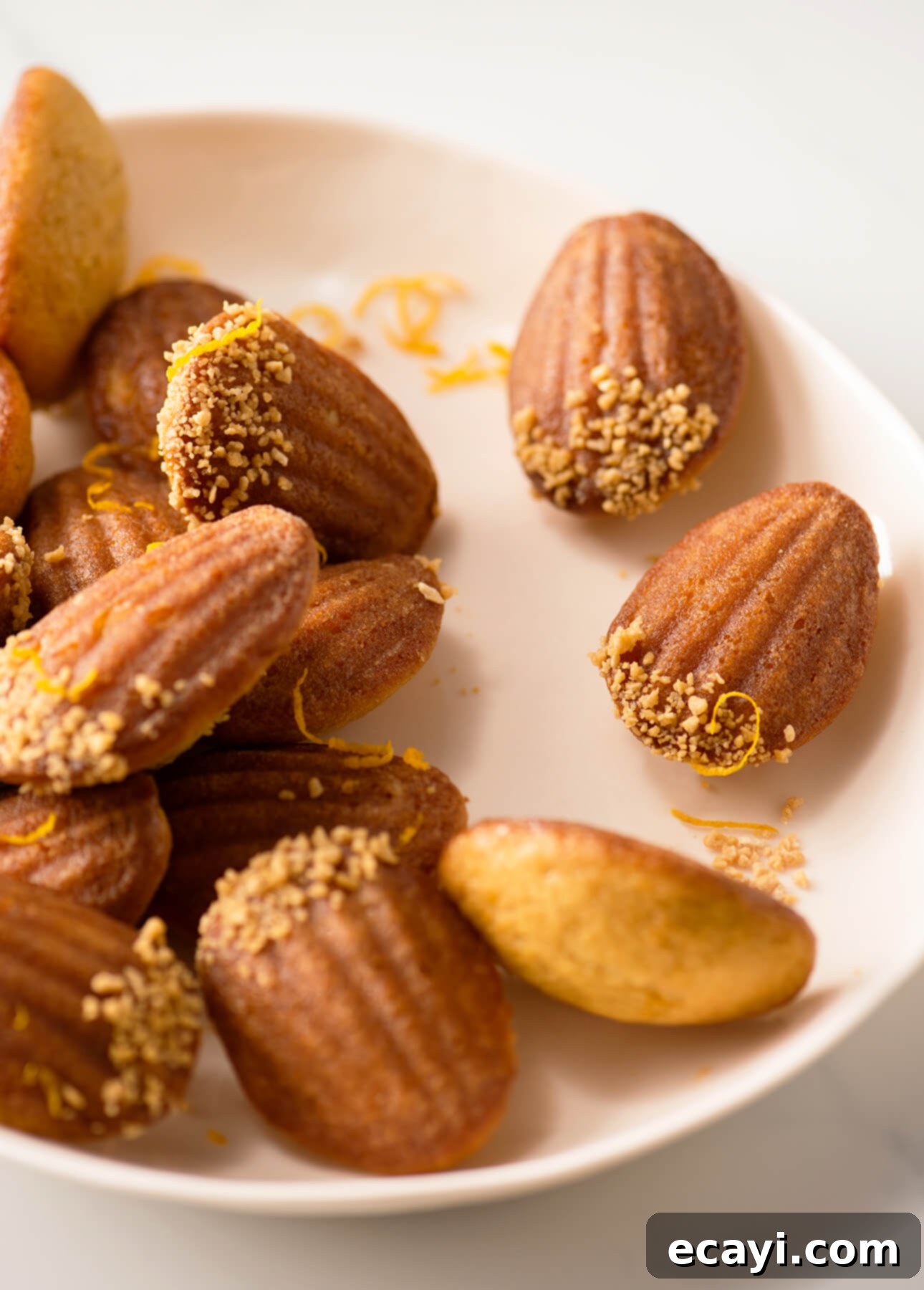Elegant Orange Maple Madeleines: Your Guide to Perfect French Shell Cakes
Indulge in these exquisite maple madeleines, where the rich, earthy sweetness of maple sugar beautifully intertwines with the bright, aromatic zest of orange. This delightful combination creates a truly unforgettable treat, perfect for elevating your teatime ritual or enjoying as a sophisticated dessert.
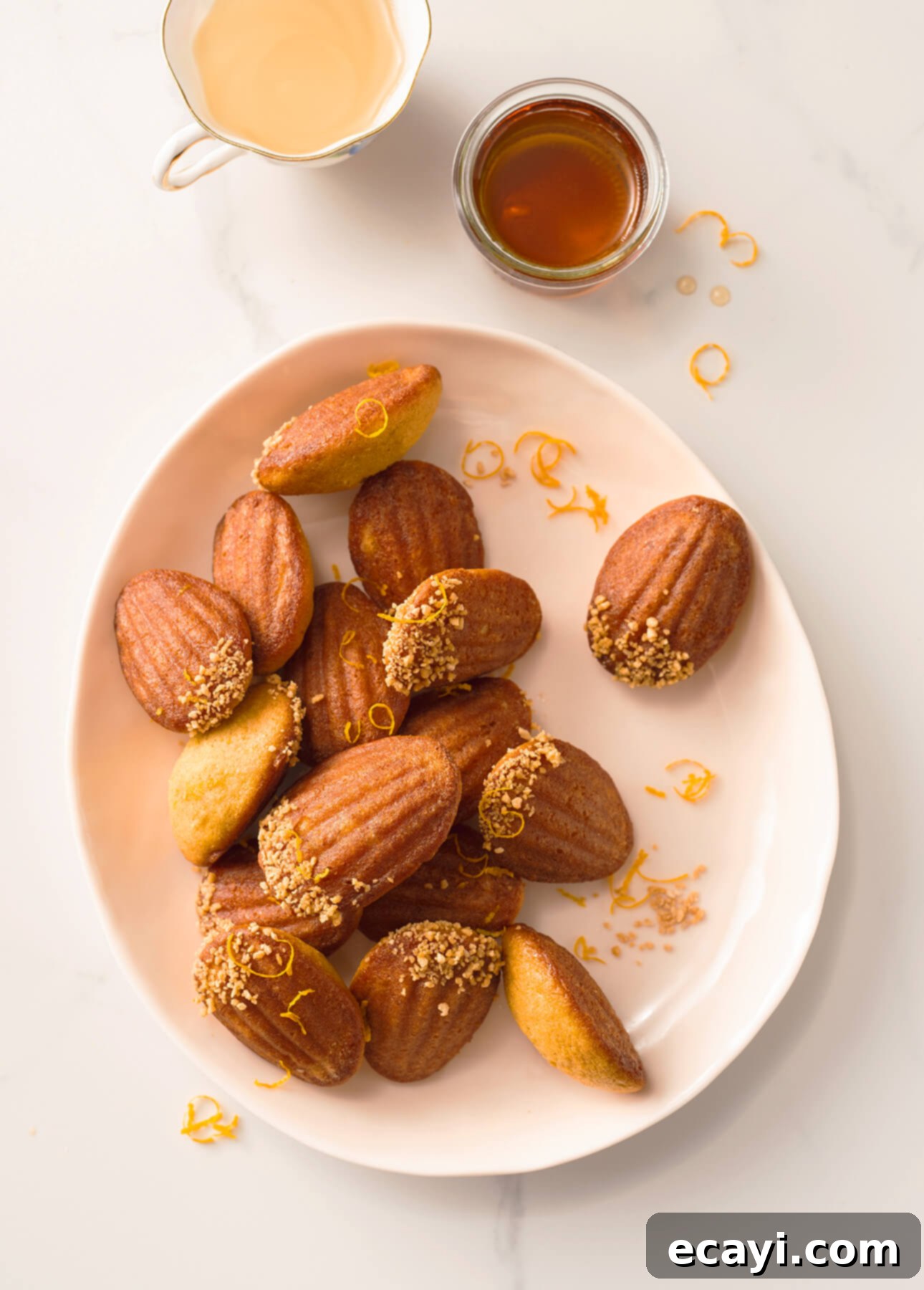
This post contains affiliate links. Full disclosure is at the bottom of the article.
For those who know me, it’s no secret that maple products hold a special place in my heart as my absolute favorite sweeteners. Growing up in a region abundant with maple trees, I’ve had the privilege of enjoying high-quality, affordable maple products throughout my life. This deep-rooted connection to maple has shaped my culinary preferences, making it my go-to choice for adding natural sweetness and complex flavor to countless dishes. The wonderful news is that the world has caught on to the magic of maple; these delightful products are now widely exported, allowing more and more people to discover their unique charm and incorporate them into their own delicious creations, especially in baked goods.
Maple products are undeniably delicious on their own – I can never resist a spoonful of fresh maple taffy during sugaring season! However, in my experience, maple truly shines when it’s baked into desserts like cakes, cookies, and, of course, madeleines. The transformation that occurs when maple sugar and maple syrup are heated is simply mesmerizing. As they warm, they release an incredibly inviting aroma, reminiscent of a cozy sugar shack, filling your entire kitchen with a sweet, woody fragrance. This infusion of an irresistible, multi-layered aroma elevates your desserts, providing an unparalleled depth of flavor that ordinary granulated sugar simply cannot replicate.
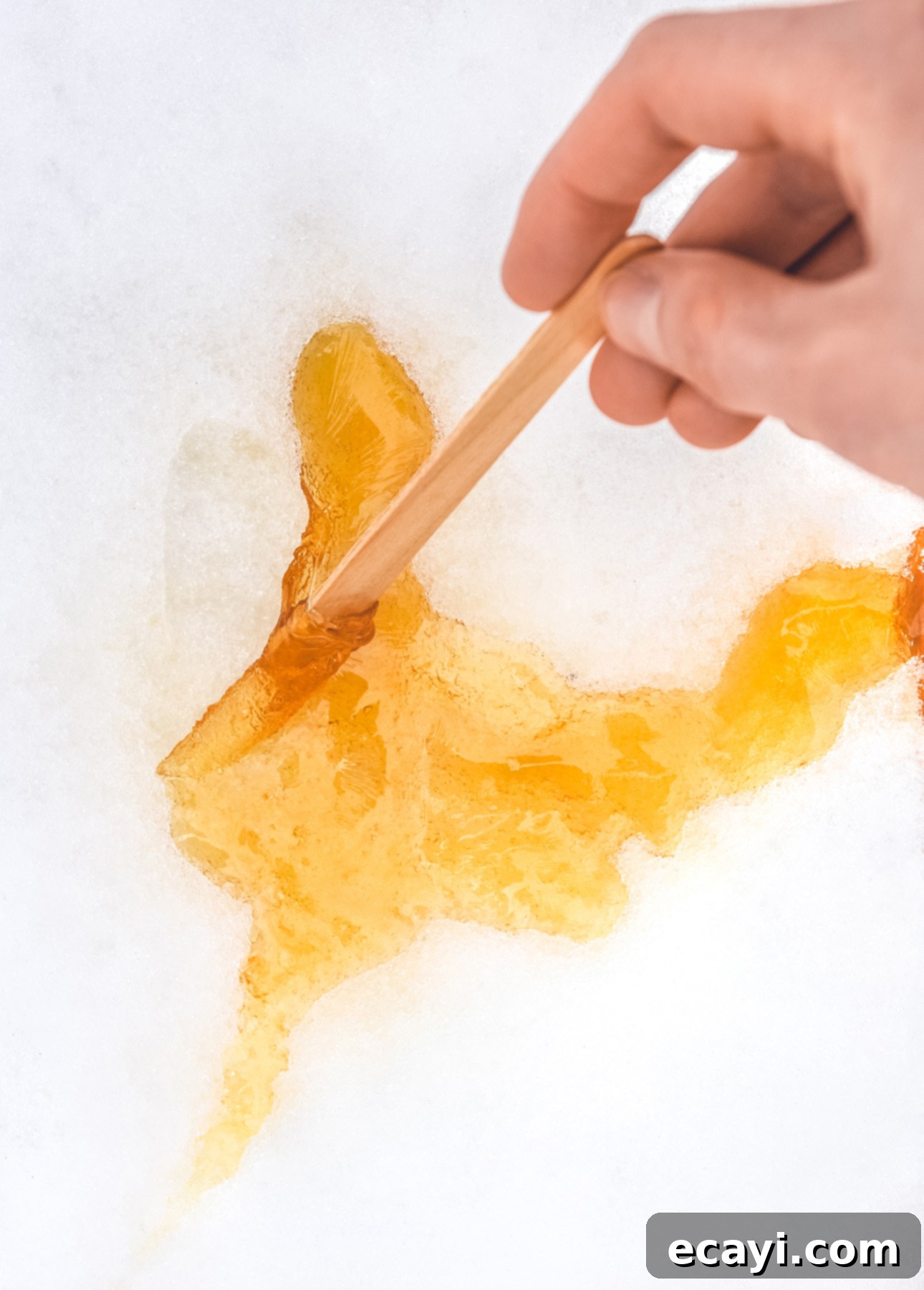
While maple syrup is indispensable for certain iconic desserts such as Maple Syrup Fudge and the classic Québécois Maple Pudding, my preferred maple product for baking is actually granulated maple sugar. Its versatility is unmatched, allowing for seamless integration into a wide array of recipes. You can typically substitute fine granulated maple sugar for regular granulated sugar at a convenient 1:1 ratio in most dessert recipes. This simple swap instantly enhances any dessert, imbuing it with the distinct, nuanced flavor of maple that is both sweet and subtly earthy.
Some of my absolute favorite desserts to create using maple sugar include delightful Maple Leaf Cookies, charming Pecan and Maple Thumbprint Cookies, and, of course, these exquisite Orange and Maple Madeleines. If you’re not accustomed to the diverse world of maple products, you might be surprised to learn that citrus fruits—especially oranges—and maple are a match made in heaven. Their flavors complement each other in a truly spectacular way! The bright, juicy acidity of oranges provides a perfect counterpoint to the sweet, caramel-like earthiness of maple, creating a balanced and vibrant taste experience that is utterly captivating.
Don’t just take my word for it; I encourage you to try these incredible Orange and Maple Madeleines for yourself. Served fresh out of the oven and lightly brushed with warm maple syrup, these madeleines transform into the ultimate teatime indulgence. Their delicate texture and irresistible flavor profile make them a perfect companion for a quiet afternoon with a hot cup of tea or a sophisticated addition to any dessert spread.
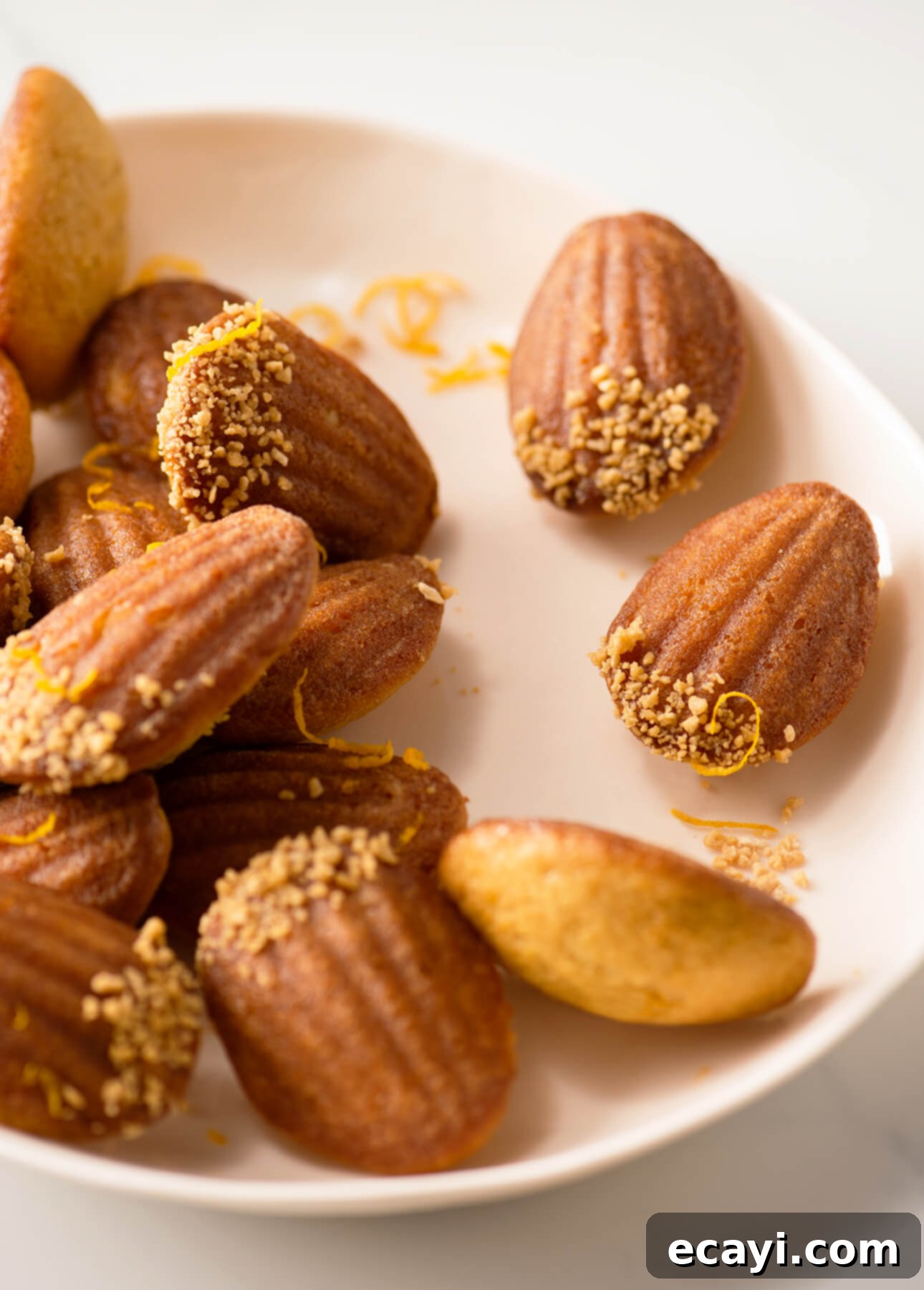
To ensure your baking success, I’ve compiled all my best tips and tricks for crafting perfect maple madeleines below. For an even more comprehensive understanding of madeleines and in-depth baking advice, I highly recommend consulting my detailed article, How to Make Classic Madeleines. This resource provides foundational knowledge that will further refine your madeleine-making skills.
Essential Tips for Crafting Flawless Orange and Maple Madeleines
VIDEO: Master the Art of Perfect Madeleines
If you’re new to the world of madeleine baking, I highly recommend watching my concise yet informative how-to video! In this short guide, I reveal my top three (and surprisingly easy!) secrets that will empower you to create those coveted, perfectly humped, and wonderfully pillowy French madeleines. This visual aid simplifies the process, making it accessible even for novice bakers.
Do You Really Need a Special Madeleine Pan?
Like many enthusiastic bakers, you might already have an overflowing collection of baking pans, leading you to wonder if investing in yet another specialized pan for madeleines is truly necessary. While a dedicated madeleine pan is essential for producing the iconic shell-shaped cakes with their distinctive ridges, it’s not the only way to enjoy this delightful treat. You can absolutely use a standard muffin pan to bake delicious madeleines, though their shape will naturally be round instead of shell-like.
To adapt the recipe for a muffin pan, simply grease each muffin cup generously and lightly flour them, tapping out any excess. Alternatively, you can use parchment paper muffin liners for easier removal. The key to mimicking the authentic madeleine texture in a muffin pan is to fill each cup with only a small amount of batter – approximately one to two tablespoons. This ensures the cakes remain thin, promoting those desirable crisp edges that are a hallmark of true madeleines. If you follow the advanced steps in the recipe, such as freezing your pan and refrigerating the batter, your round madeleines can even develop that characteristic hump in the center, giving them an authentic rise despite their different shape.
Achieving the Signature Humps on Your Maple Madeleines
The pronounced hump on the back of a madeleine is its most distinctive feature, often considered the hallmark of a “perfect” classic madeleine. This seemingly simple characteristic has, however, given madeleines an undeserved reputation for being overly fussy or difficult to bake. I’m here to tell you that achieving perfectly plump madeleine humps is actually quite straightforward, relying on a few simple principles.
The secret to madeleine humps lies in creating a significant temperature shock. This involves transferring very cold madeleine batter into a freezing cold pan, which is then immediately placed into a very hot oven. The rapid change in temperature causes the edges of the madeleine to set quickly, while the center of the batter continues to expand and rise vigorously, pushing upwards to form that beautiful dome. While it might be tempting to bypass the refrigeration and freezing steps to speed up the process, doing so will likely result in madeleines that are flatter, denser, and lack the delicate, airy texture that makes them so special. Patience in these initial cooling steps is truly a virtue when it comes to madeleine baking.
For detailed guidance on how to properly prepare your madeleine pans and batter to achieve these coveted humps, please refer to the comprehensive instructions provided within the recipe section below. Following these steps carefully will ensure your maple madeleines turn out visually stunning and texturally impeccable.
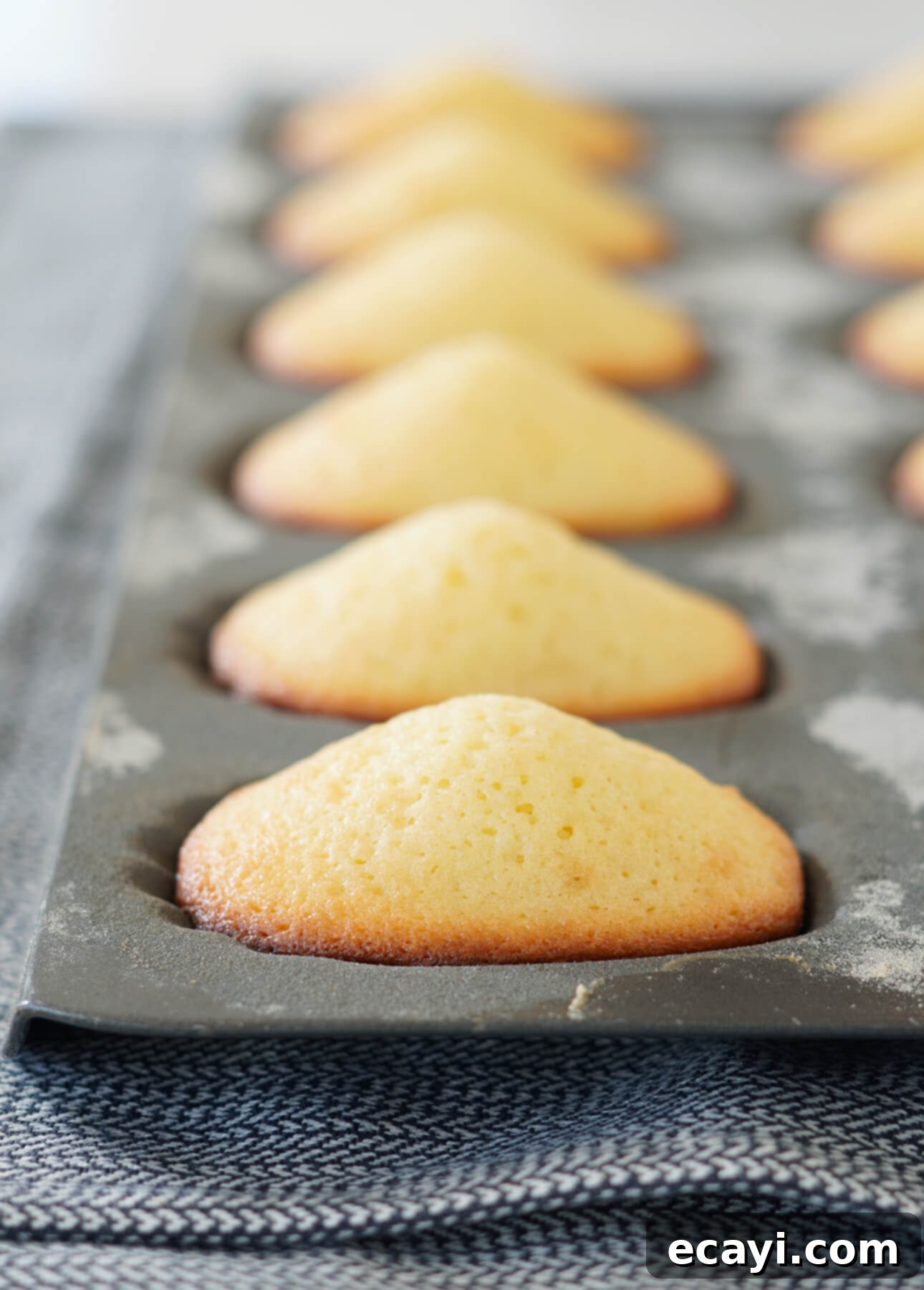
Can You Make Classic Madeleines Ahead of Time?
Madeleines are undeniably at their peak perfection when enjoyed freshly baked. This is the magical moment when the striking contrast between their incredibly light, tender crumb and the delicate, crispy edges is most pronounced and enjoyable. Ideally, madeleines should be savored within a couple of hours of emerging from the oven to fully appreciate this unique textural harmony. The subtle crunch and airy interior gradually soften over time.
If you choose to store madeleines in an airtight container, they will inevitably lose their signature delicate crispy edges. However, please don’t despair! Day-old madeleines are still absolutely delicious, offering a delightful texture that more closely resembles a mini cupcake. While different from their fresh-baked state, they remain a wonderful treat that is certainly nothing to turn your nose up at. The softer texture can be quite comforting in its own right.
The excellent news for busy bakers is that madeleine batter is remarkably stable and will keep beautifully when refrigerated for up to three days. This fantastic feature means you have the flexibility to bake small batches of madeleines as needed, allowing you to enjoy them fresh over several consecutive days. Imagine having warm, freshly baked madeleines at your fingertips whenever the craving strikes – a truly dreamy proposition, if you ask me!
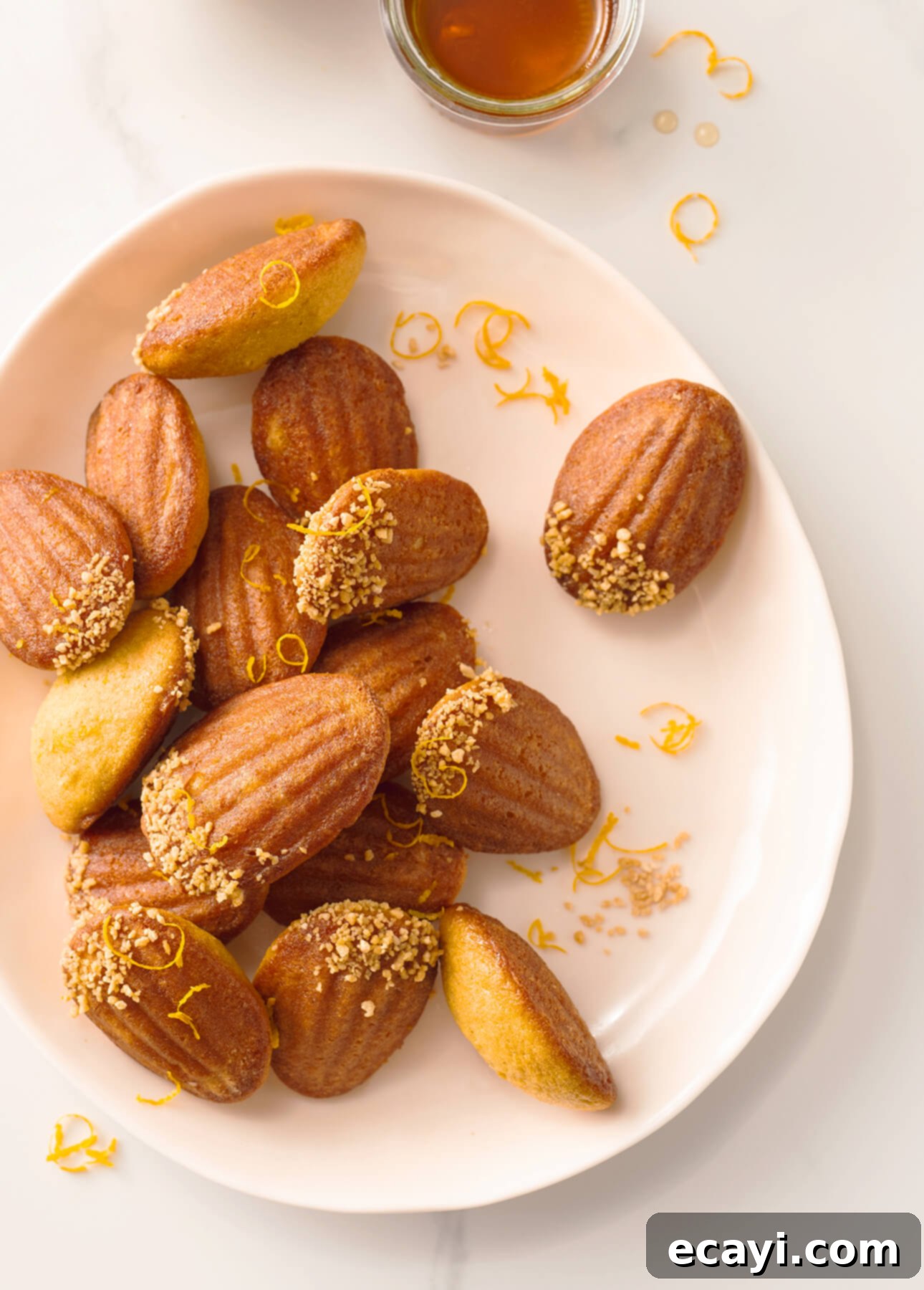
Understanding Granulated Maple Sugar
Granulated maple sugar is a truly fascinating and flavorful sweetener, produced by a simple yet elegant process: boiling maple syrup until all the liquid evaporates, leaving behind solid, crystalline sugar. This natural sugar comes in a range of textures, from superfine and powdery to distinctly coarse granules. For this specific recipe for Orange Maple Madeleines, we utilize fine granulated maple sugar, which you can see beautifully illustrated on the left-hand side of the photo below. Its fine consistency allows it to dissolve evenly and integrate smoothly into the batter, ensuring a consistent texture in your madeleines.
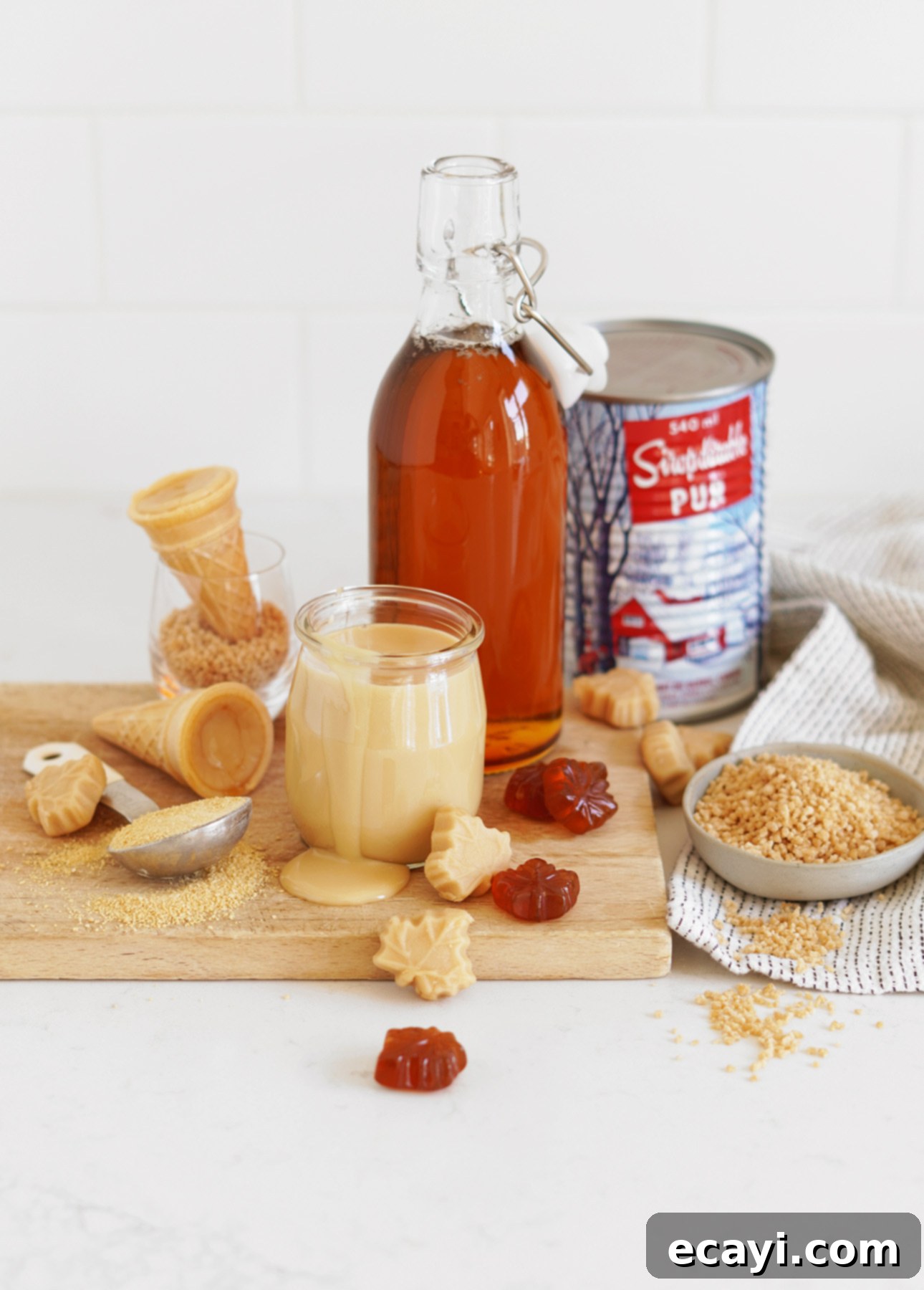
While the texture of granulated maple sugar can be slightly more irregular than that of highly refined granulated white sugar, its culinary properties are remarkably similar. It acts and dissolves in much the same way, which is why granulated maple sugar can be directly substituted for regular granulated sugar in virtually any recipe at a convenient 1:1 ratio. This makes it an incredibly versatile ingredient for elevating everyday baking with its distinctive, warm maple notes.
It’s worth noting that granulated maple sugar can sometimes be a little more challenging to locate than maple syrup, and it often comes with a higher price tag due to its concentrated nature and specialized production. To find it more affordably, I recommend seeking out companies that offer it in bulk quantities. For instance, in Canada, Yupik is a great resource, selling 450 g (1 lb) bags of organic maple sugar for under CAD 20, making this delightful ingredient more accessible for regular use.
No Maple Sugar? Can I Use Regular Granulated Sugar?
Absolutely, you can substitute regular granulated sugar if maple sugar is unavailable. While the maple flavor in your madeleines will be less intense without the granulated maple sugar, you can still infuse a wonderful aromatic maple kick! To do this, ensure you have some maple syrup on hand. As instructed in the recipe, generously brush the warm, freshly baked madeleines with pure maple syrup. This step will add a beautiful glaze and a delightful burst of that irresistible maple aroma and sweetness, ensuring your madeleines are still wonderfully flavorful and comforting.
Can Other Orange Varieties Be Used in This Recipe?
Yes, indeed! Any member of the orange family will work beautifully in this recipe, allowing for delightful variations in flavor and aroma. From sweet mandarins to vibrant blood oranges or classic navel oranges, the goal is to infuse these maple madeleines with aromatic zest, and any type of orange will contribute wonderfully. Don’t feel limited to a specific kind! You could even experiment with other citrus fruits, such as lemons, if that’s what you have readily available. Lemon zest would introduce a brighter, tangier note that would also complement the rich maple flavor elegantly.
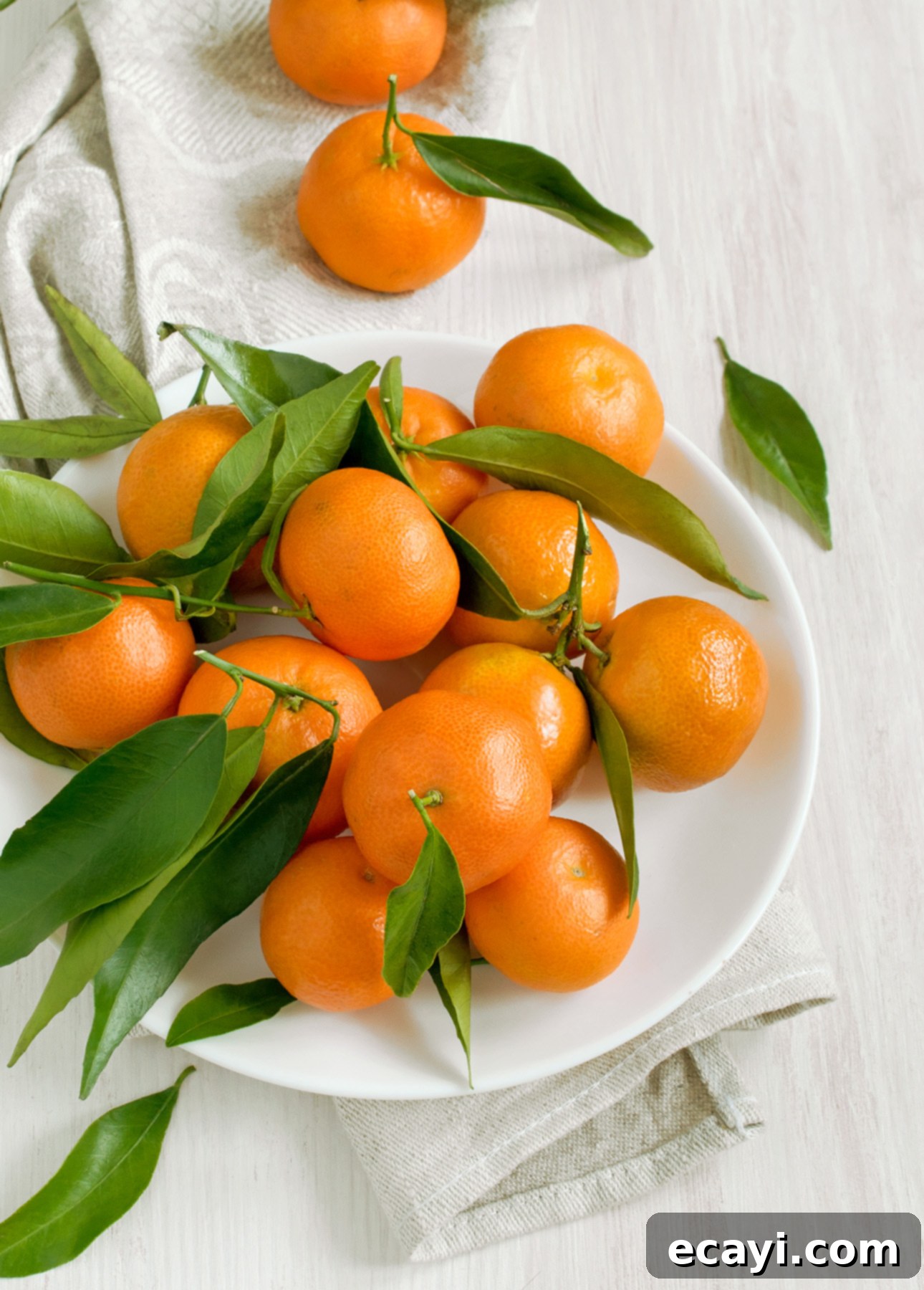
Can I Omit Orange Zest from This Maple Madeleine Recipe?
Yes, you certainly can choose to leave the orange zest out of this maple madeleine recipe completely. The madeleines will still be incredibly delightful and flavorful without it, maintaining their core maple sweetness and delicate texture. However, they might not be quite as aromatic or possess the subtle floral undertones that the orange zest contributes. Since only the zest is used, the orange flavor is intended to be delicate and complementary, rather than overpowering. If you prefer, you could introduce a different aromatic element: consider using orange blossom water for a more pronounced floral note, or take a traditional approach, sans citrus, by incorporating a touch of pure vanilla extract instead. Vanilla is a classic pairing with maple and would add a warm, comforting depth of flavor.
Explore More Maple Magic with My Cookbook!
Do you adore maple as much as I do? Then you absolutely need to get your hands on my acclaimed Maple Desserts & Treats Cookbook! This special collection is brimming with 25 maple-centric recipes, ranging from timeless classics that evoke nostalgic memories to exciting modern treats that will surprise and delight your palate. Maple Desserts & Treats is a convenient, downloadable eBook featuring a curated selection of irresistible recipes, all made with nature’s most aromatic and unique sugar. Get instant access to all these delicious recipes in a handy, “save it everywhere” PDF format, making it easy to reference on your phone, tablet, or computer, or even print out your favorites! LEARN MORE AND GET YOUR COPY TODAY!
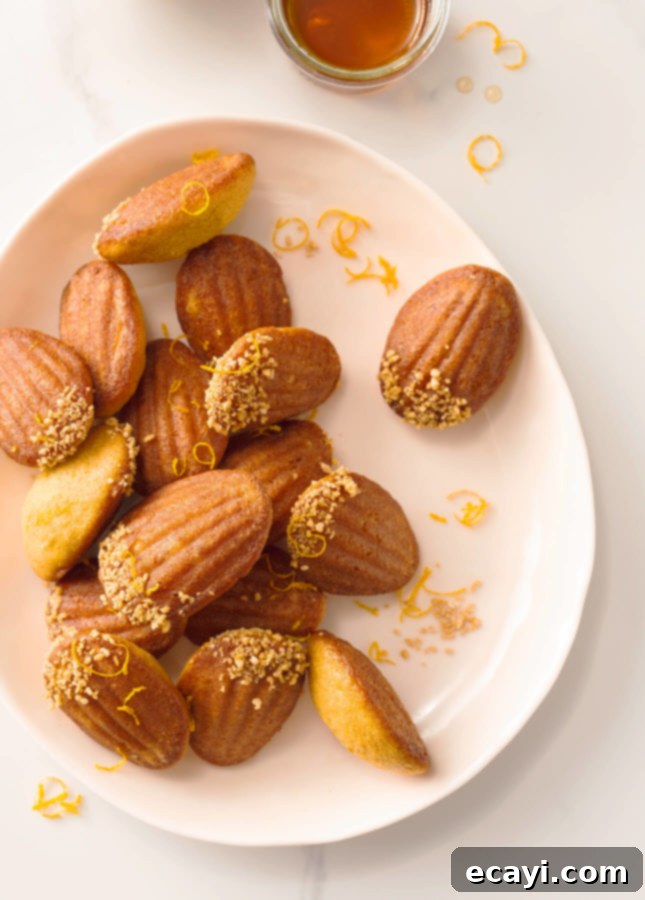
Pin Recipe
Orange and Maple Madeleines
Ingredients
- 1 cup all-purpose flour
- 1 tsp baking powder
- ½ tsp baking soda
- ⅛ tsp kosher salt, or fine sea salt
- 3 large eggs
- ⅔ cup granulated maple sugar or ⅔ cup (135 g) regular granulated sugar
- 2 tbsp finely grated orange zest (about 1 orange)
- 1 tsp orange blossom water, or pure vanilla extract
- ½ cup unsalted butter (1 stick), melted and cooled
- ¼ cup pure maple syrup
Instructions
-
Preheat your oven to 425°F (220°C). Position an oven rack in the upper third of the oven. Prepare your madeleine pan by generously greasing each cavity with soft butter or a non-stick cooking spray. Then, dust lightly with all-purpose flour, tapping the pan upside down to remove any excess flour. Immediately place the prepared pan in the freezer to chill thoroughly.
-
In a medium bowl, sift together the flour, baking powder, baking soda, and salt. Whisk these dry ingredients briefly to ensure they are well combined, then set the bowl aside.
-
In the bowl of a stand mixer fitted with the whisk attachment, or in a large mixing bowl if you are using a hand mixer, combine the eggs and maple sugar (or regular sugar). Beat on medium-high speed for approximately 5 minutes until the mixture becomes notably pale in color and thick in consistency, forming ribbons when the whisk is lifted. Whisk in the finely grated orange zest and orange blossom water (or vanilla extract).
-
With the mixer running at the slowest speed, slowly drizzle the melted and cooled butter into the egg mixture. Mix just until the butter is fully incorporated into the batter. Remove the bowl from the mixer. Using a flexible spatula, add the reserved dry ingredients to the batter in three additions, folding gently after each addition until just combined. Be careful not to overmix. Cover the mixing bowl tightly with plastic wrap and refrigerate the batter for a minimum of 30 minutes, or ideally for up to an hour, or even overnight for best results. This chilling period is crucial for the madeleines’ texture and hump development.
-
TO BAKE THE MADELEINES: Once the batter has chilled sufficiently, retrieve the prepared madeleine pan from the freezer. Take the madeleine batter out of the refrigerator. Using your spatula, gently mix the batter a few times to relax it and release any excess air bubbles that may have formed during chilling.
-
Carefully fill each shell-shaped cavity of the madeleine pan with about two teaspoons of batter, or approximately three-quarters full. A small cookie scoop can make this step quick and easy. Immediately place any remaining batter back into the fridge while the first batch bakes.
-
Bake the madeleines for 8 to 10 minutes. Keep a close eye on them; they are ready when they are beautifully puffed in the center and golden brown around the edges. As soon as you remove the madeleines from the oven, unmold them immediately by turning the pan upside down and gently tapping one edge of the pan on a hard surface. If any madeleines are reluctant to release, you can carefully coax them out with the tip of a butter knife. Place the hot madeleines shell side up on a wire rack positioned over a baking sheet. While they are still hot, use a pastry brush to generously coat each madeleine with pure maple syrup. Allow the madeleines to cool completely to room temperature before serving.
-
Before baking your next batch of madeleines, it’s crucial to thoroughly wash the madeleine pan to remove any residual butter or crumbs. Then, re-grease and re-flour the clean pan. Place it back in the freezer for at least 10 minutes to chill completely. Once chilled, fill the cavities with cold batter from the fridge, then bake as instructed above. Repeat this process as necessary until all batter is used.
-
SERVING SUGGESTIONS: For the best experience, always serve madeleines at room temperature. If you prefer them warm, you can gently reheat them in a 325°F (160°C) oven for about 5 minutes, which will help restore a slight crispness to their edges.
-
STORAGE TIPS: Madeleines are truly best enjoyed freshly baked on the day they are made. However, if you have any leftovers, they will keep well in an airtight container at room temperature for up to 3 days. Their texture will soften slightly, but they will remain delicious.
Did you make this?
I’d love to hear how your Orange Maple Madeleines turned out! Please leave a comment below to share your experience, or snap a picture and tag it with @foodnouveau on Instagram. Your feedback and creations inspire me!
Disclosure Notice: This site is a participant in the Amazon Associates Program, an affiliate advertising program designed to provide a means for the site to earn fees by linking to Amazon and affiliated sites.
If you click on an affiliate link and subsequently make a purchase through such links, I may earn advertising or referral fees, at no extra cost to you. This support is invaluable as it helps me continue creating new, high-quality content for the blog – so thank you for your support! For more information about advertising practices on this site, please refer to my comprehensive Disclosure Policy.
